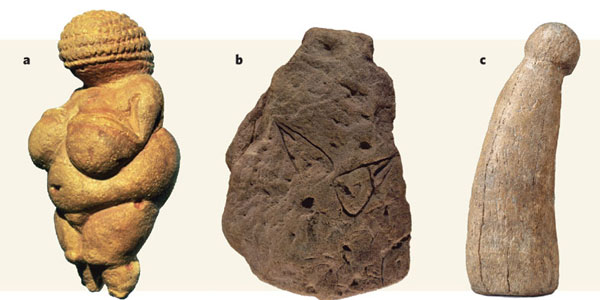Theories of human origin
There are three main theories of human origin. They are:
- Mythical theory
- Creation theory
- Evolution theory
Mythical theory: Among traditional communities, different stories of origin are told to the young explaining how members of their community are thought to have come into being.
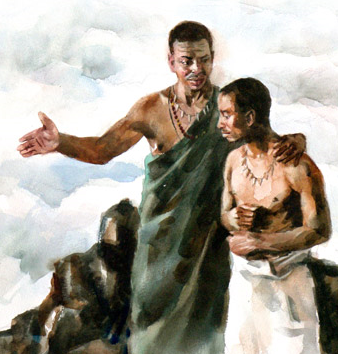
Creation theory: Christians believe that God created the first human beings whom he named Adam and Eve.
The two got children from whom all the people of the world descended.
This is called “The theory of creation”
Evolution theory
Scientists have put forward theories to explain how human beings came into being.
They believe that people developed through a process called evolution.
Evolution is a process of development.
It involves slow change from one stage to another.
The Theory of Evolution was developed by a British scientist called Charles Darwin.

According to Darwin, all living things developed over millions of years from a simple state to their present developed state.
Human beings can learn about evolution by studying the remains of ancient plants and animals that are trapped between layers of rocks and are sometimes exposed by erosion.
Remains of ancient plants and animals are called fossils.
People who study fossils are called archaeologists.
Archaeologists
Archaeologists also collect remains of tools or other items that may help to explain how ancient people lived.
They also study rock and cave drawings and paintings made by the ancient people.
From these, they tell for example, if the people were hunters, gatherers or cultivators.
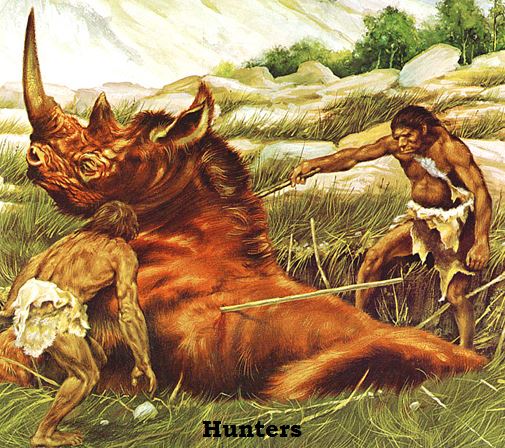
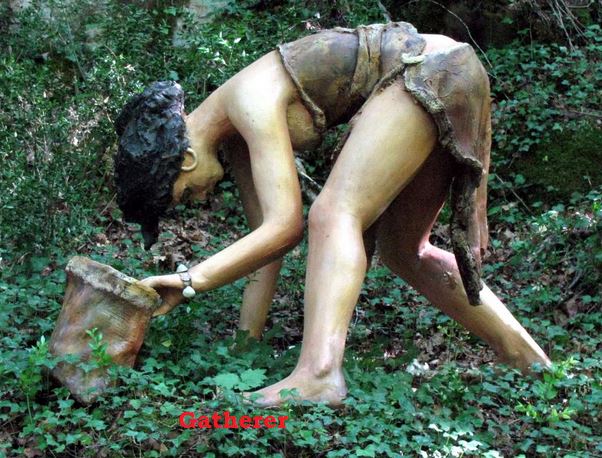
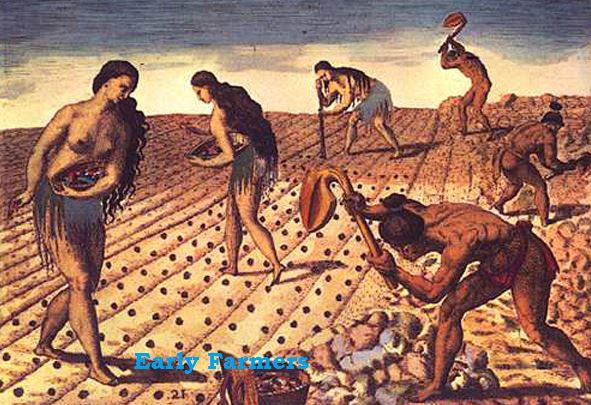
They can also identify the types of animals found during this period.
The Stages of Human Evolution
The Theory of Evolution divides the development of human beings into three main stages.
These stages are also called Stone Ages.
This is because the people used stones to make their tools.
The three stages are:
- The Early Stone Age – Homo Habilis
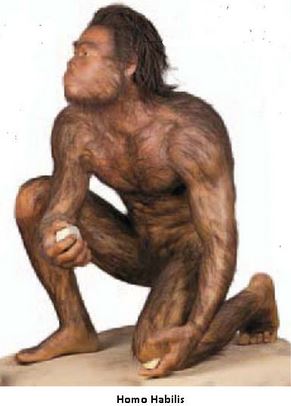
- The Middle Stone Age – Homo Erectus
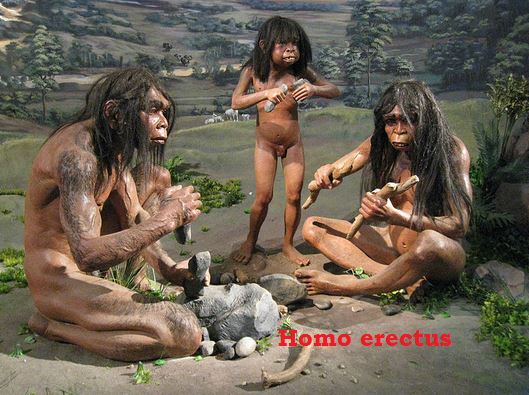
- The Late Stone Age – Homo Sapiens

Homo Habilis
Also known as the Early Stone Age people.
The early stone age people are believed to be the earliest descendants of human beings.
They are thought to have lived about 20 - 25 million years ago.
Characteristics of Homo Habilis
- Hairy skin, to keep them warm
- Slept in caves and trees, especially near water sources
- Walked on four legs and were short and strong
- Small brains; only about one third of the normal brain of today’s people
- Canine teeth were long and strong, like those of cats.This was most likely used to tear meat or for stripping the bark from trees.
- No well developed language. They communicated through sounds, signs and gestures.
- Used stone tools to shape other stones, dig up roots, hunt animals and make other weapons and tools from sticks.
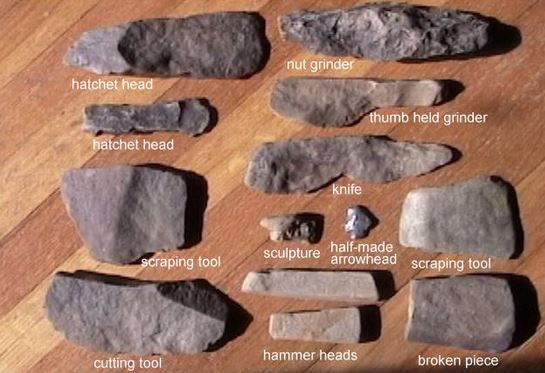
Below are two images of the Homo Habilis.

Homo Erectus
Also known as the Middle Stone Age people.
The people who lived in the Middle Stone Age were more developed than those in the early stone age.
They included the Homo Erectus.
Characteristics of Homo Erectus;
- Less hair on their bodies
- Began walking on their hind limbs, although they were still bent forward
- Higher mental abilities or their brains were bigger
- Some form of communication by combining words, gestures and signs
- Started making clothes from animal skin and barks from trees
- Smeared their bodies with animal fat and red earth to keep them warm and dry
- Their stone tools were better than those used by the Early Stone Age people, and they were able to kill larger animals.
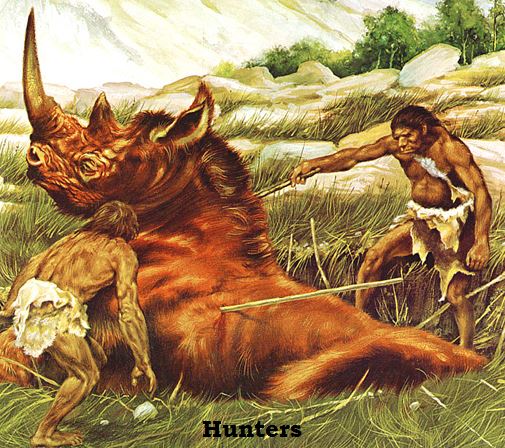
Way of life of the Homo Erectus
- Homo Erectus used sharpened sticks for digging up roots and hunting.
- They made stronger weapons by tying strips of animal skin and strong creeping plants and stones.
- They begun making clay bowls which they used for serving food. Some of the bowls were made out of stone.
- They made fire by rubbing sticks together.
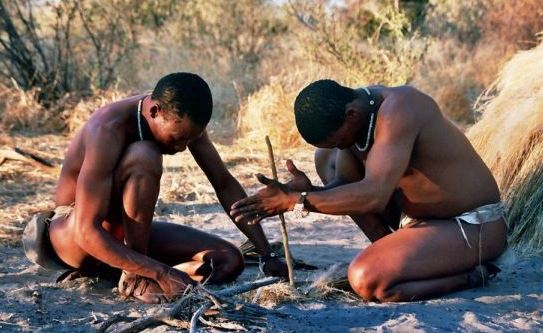
- They used this fire to keep themselves warm at night and to keep away wild animals.
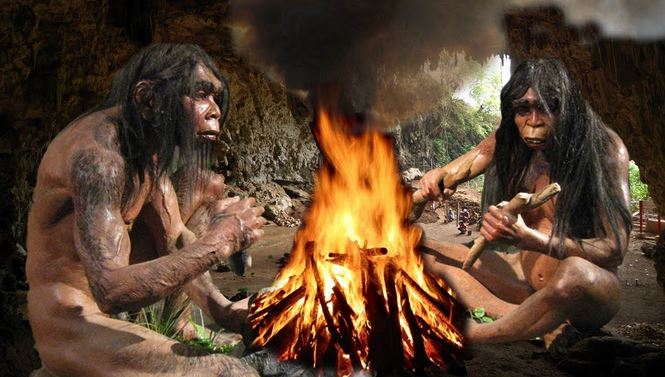
- They begun using fire to cook some of their food.

- They moved from place to place in larger groups of about 50 people to search for food and to protect each other.
Below is an image of a middle stone age man, and some of the tools they used.
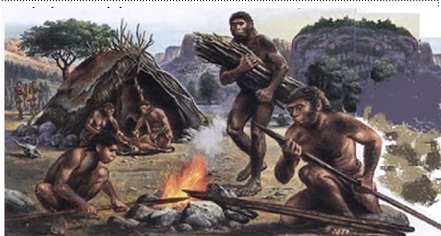
Homo Sapiens
Also known as Late Stone Age people. They were more developed and resembled human beings.
Characteristics of Homo Sapiens:
- Still lived in caves to protect themselves from harsh weather and from wild animals and lived by hunting and gathering
However, they had learned how to;
- Smelt iron to make better tools, mainly knives, arrows and spears for hunting.
- Apply poison on arrowheads, which ensured that any animal they pierced died.
- Collect birds’ eggs, nuts, fruits and some types of insects, catch fish and dig up roots. This increased the variety of food they ate.
- Make pots, baskets, mats and bark together. clothes. Remains of these items have been found by archaeologists in some caves.
Below is an image of the Homo Sapien.

Gradually, towards the end of this period, human beings continued to develop.
At this time they began to:
- Keep domestic animals and settle in one place forming simple villages.
- Live in simple shelters made sticks,grass, leaves and other materials in their environment.
- Develop some form of art and draw pictures about their way of life and the animals they hunted.

- Make paintings of human beings, plants and the things they used like pots and baskets, bows, arrows and spears on stones and on rocks in the caves.

Cave drawings and painting are interpreted by archaeologists to show different economic activities, cultural practices and religious beliefs of people who drew them.
Below is an image of some Homo Sapien art
